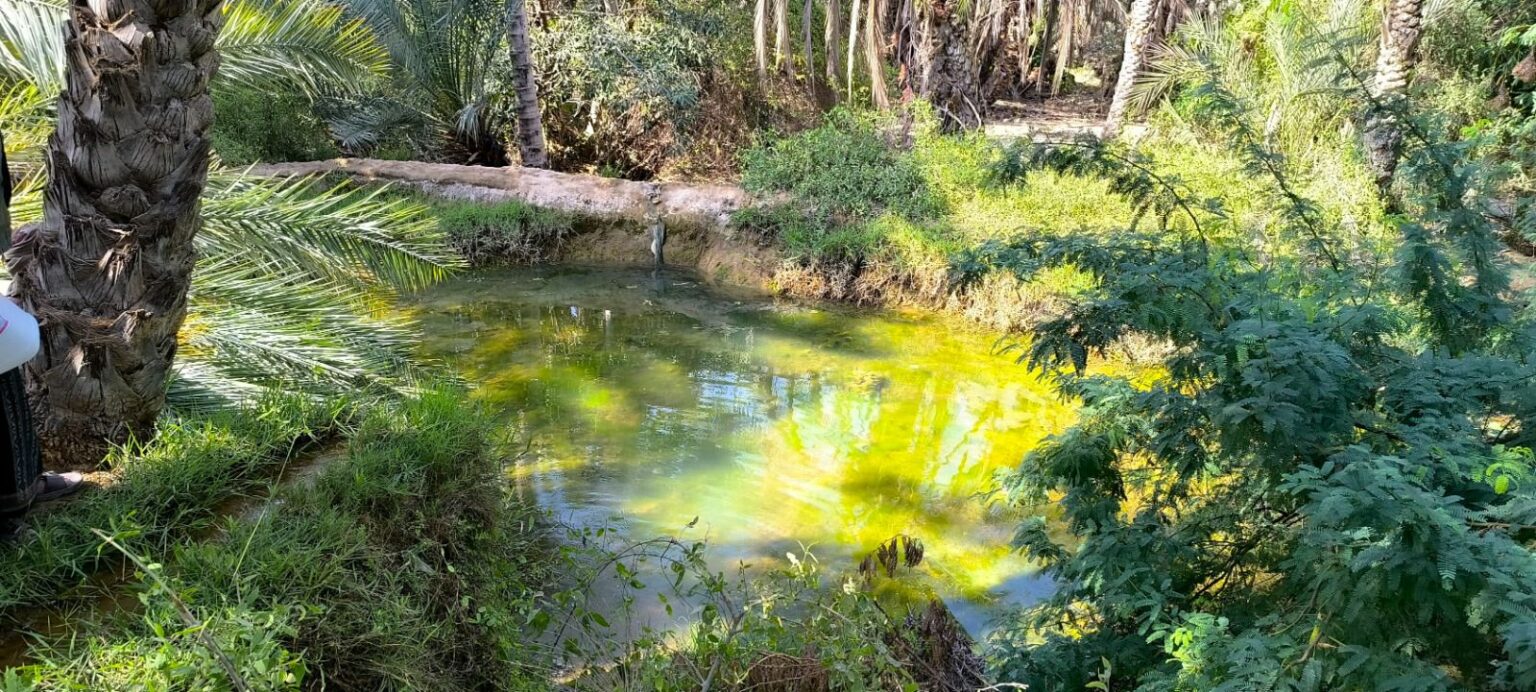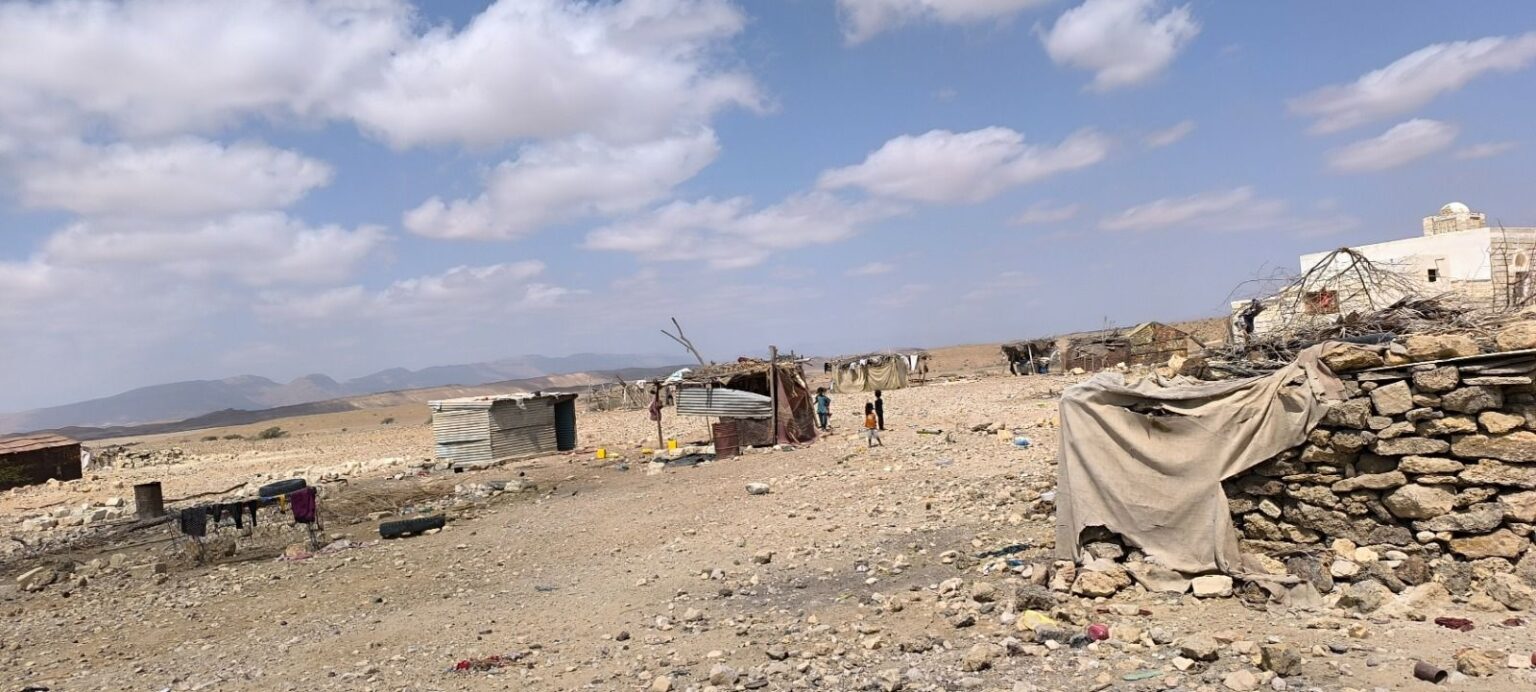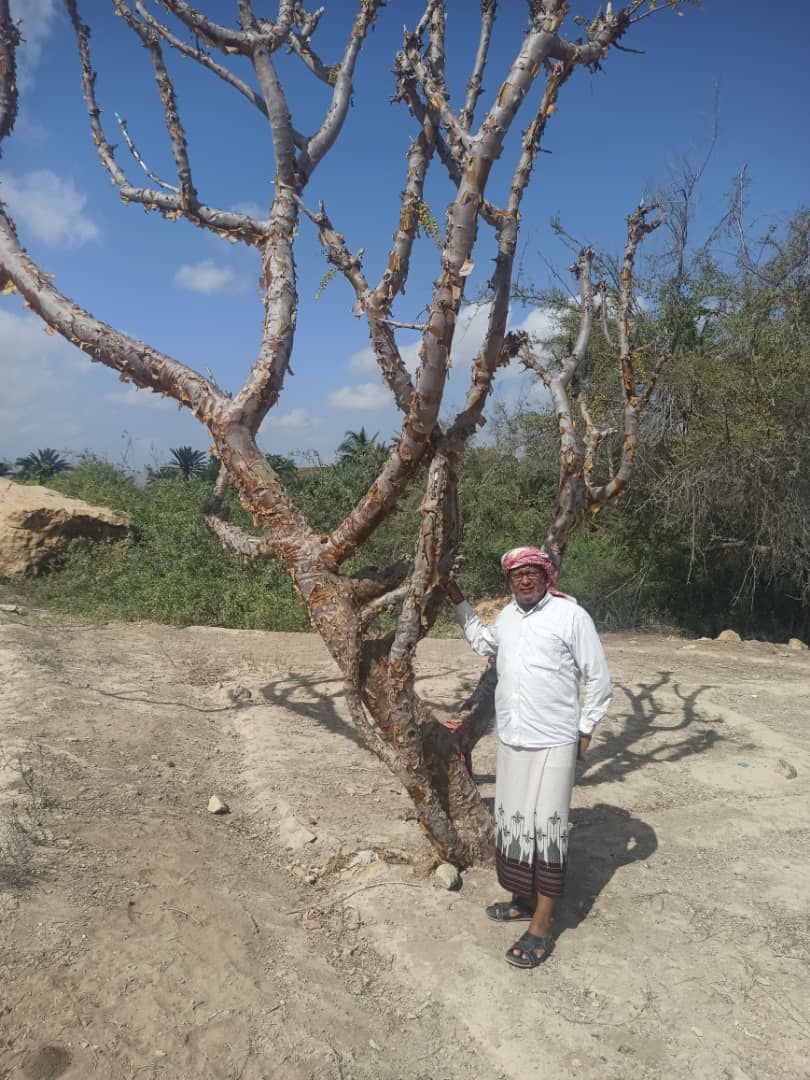The Sahwat area is located in the Ghayl Bawazir District of Hadhramout Governorate, at coordinates (E 49020, N 14049). It is bordered to the east by the Jambalah area and Wadi Khailaw, to the west by Kathibah and Wadi Nabrah, to the south by Al-Naq‘ah, and to the north by a mountain range. The area is distinguished by its strategic location and environmental diversity, which grant it agricultural and historical significance.
Sahwat is renowned for its natural spring that has been flowing for decades, serving as a primary source of drinking water and irrigation. However, the spring’s flow has declined since excavation and blasting activities in the 1990s, which negatively impacted agricultural productivity.
On April 30, 2025, a research team from the Center, led by Prof. Khalid Saleh Bawahidi and Dr. Salah Bin Farijan, conducted a field visit to the area to observe conditions and collect water samples.

Sahwat is known for cultivating date palms and bananas, in addition to other crops such as coconuts and mangoes—a fruit widely associated with Hadhramout. The area suffers from institutional neglect and population displacement, which have contributed to the decline in agricultural output. Furthermore, the absence of sustainable water resource management has exacerbated the situation.
Historically, the area was inhabited by tribes such as Al-Ba‘wadh, Al-Bin Fadl, and Al-Khambash. It was previously managed as state-owned land. Members of the Al-Sakouti family were known for overseeing harvest operations and crop distribution.
Recommendations:
- Implement rehabilitation projects for the spring and improve irrigation efficiency.
- Encourage population return through agricultural support and infrastructure development.
- Document and promote the area’s cultural heritage as a potential tourist destination.

Conclusion:
The research team’s visit represents a preliminary step toward understanding the environmental and social challenges facing Sahwat. The Center hopes that the findings will contribute to the development of sustainable plans in collaboration with governmental and local entities, emphasizing the importance of preserving water resources as a vital pillar of development in Hadhramout.


